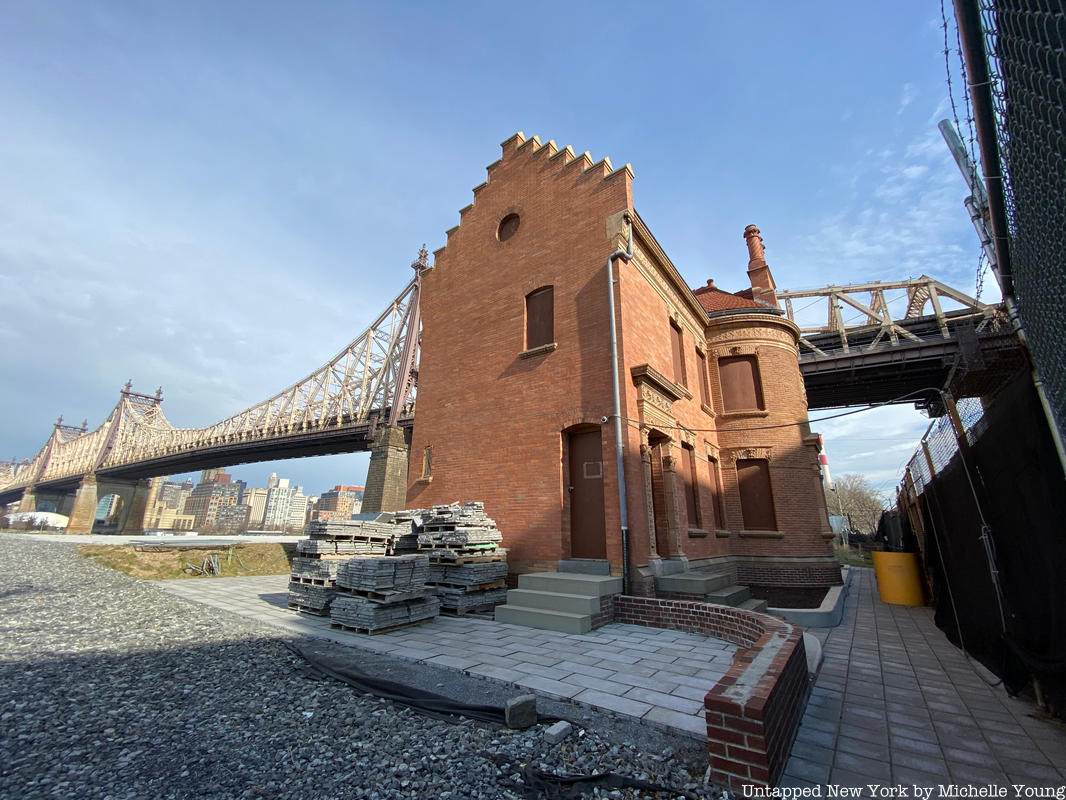Back in the 1800s, building material companies would sometimes construct a model structure to showcase the potential of a new, revolutionary material. In Brooklyn, the Coignet Building in Gowanus was a showpiece for reinforced concrete, first introduced at the 1867 Exposition Universelle de Paris. Sitting underneath the Queensboro Bridge in Long Island City is the New York Architectural Terra-Cotta Company building, the last vestige of a vast and influential company. The rest of the property, which once included a complex of factory buildings, was completely demolished, but this lone building still stands handsomely behind construction fences. Today, the building is nearing the end of a long story from obscurity, to decline, to reclamation.
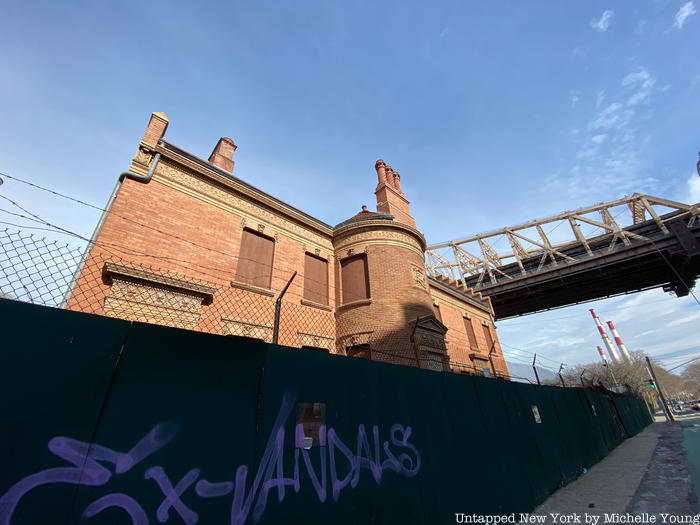
The New York Architectural Terra-Cotta Company was responsible for suppling material for some of the most notable buildings in New York City, including Carnegie Hall, the Ansonia Hotel, and the Plaza Hotel. Its clients included architects and firms like Cass Gilbert, McKim Mead & White, Warren & Wetmore (of Grand Central), D.H. Burnham (of the Flatiron Building), Francis Kimball, Carrère & Hastings, and George Post.
One of the main reasons the New York Architectural Terra-Cotta Company building is still standing is because of its hard-won landmark status, which was achieved in 1982 following a grass-roots effort by local residents and historians. The property as a whole passed through various owners after the closing of the company in 1932. Until the 1940s it was still in use for the production of terra cotta by the Eastern Terra Cotta Company, a successor company, and the owner continued running a business in the building until his death in 1968.
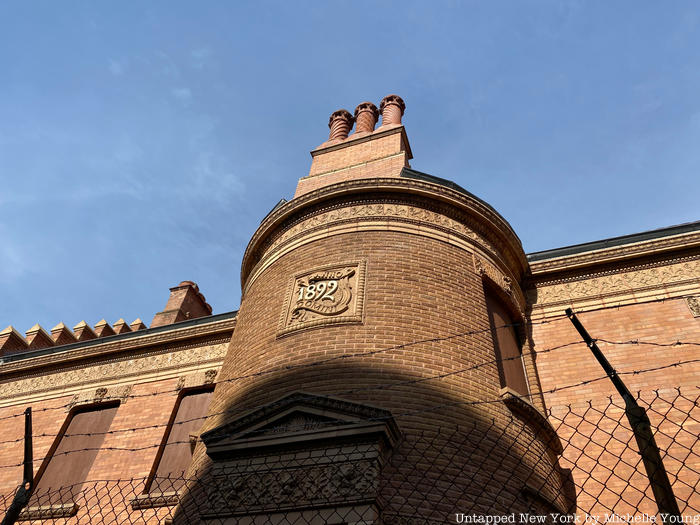
In 1974, the property was purchased by Citicorp which moved swiftly to demolish everything save for the office building, which went into a state of decay over the next two decades. Fortunately, the landmarking effort for the building began in the 1970s and the building managed to escape the wrecking ball that doomed everything around it.
Remarkably, it was discovered only after the building was landmarked that Francis Kimball was the architect who designed it. It makes sense, given that Kimball was a client of the New York Architectural Terra-Cotta Company, employing terra cotta for commissions like the Corbin Building, the Montauk Club in Park Slope, and other buildings. In 1999, Stuart Match Suna, the president of Silvercup Studios purchased the property under the company Terra Cotta LLC from Citicorp with plans to restore it, much to the relief of preservationists. (Suna’s wife Vicki Match Suna is an architect and was commissioner of the Landmarks Preservation Commission for fifteen years).
At its core, terra cotta is made of clay and the New York Architectural Terra-Cotta Company mined most of it from northern and central New Jersey. The clay went through a long process from mining to finished product, a large portion of which took place in the factory on the Long Island City waterfront.
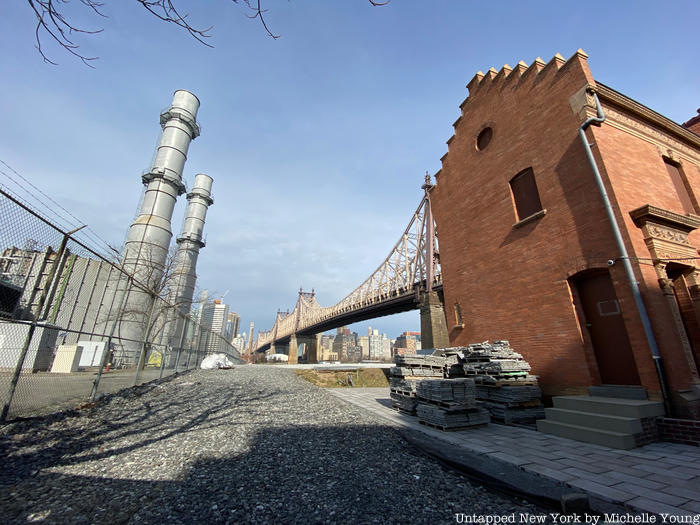
The building was constructed in 1892, an auspicious year that saw the opening of Ellis Island, and the formation of large conglomerates like Carnegie Steel and General Electric. New York Architectural Terra-Cotta Company had been in operation since 1886 and the building was designed as an office headquarters, necessitated by the expansion of the company, and was sited at the entrance to the facility as a welcoming and aspirational model for clients to see.
The Landmarks Preservation Commission designation report calls the building, “a fanciful, two-story structure that displays in its construction an exuberant use of brick and terra cotta.” It’s a mix of Renaissance and Tudor Revival styles, with terra cotta ornamentation over nearly every door and window. Such details could have been ordered off the company’s catalogue, making the building a physical manifestation of the quality and range of the company’s offerings.
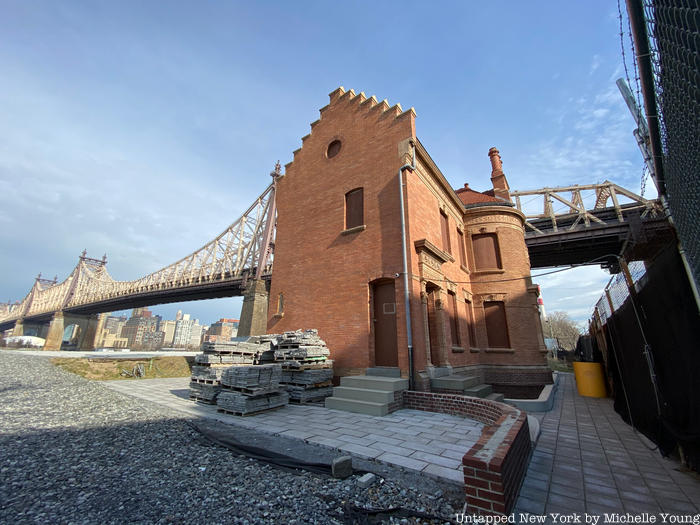
The curved bay on the Vernon Avenue side has two important details — first, a large rectangular plaque bearing the name of the company. With the wood panels on the construction fence, you can see it by peering through the window or by standing at a distance across the street. Above it, there is a square plaque with the year of construction and the Latin words Anno Domini. There are two chimneys with flues that were that were part of the company’s catalogie.
The New York Architectural Terra-Cotta Company factory was advanced for its time, hiring skilled labor for the complex steps of the process. The Landmarks Preservation Commission deemed the factory, “the largest of their kind in the country and were built specifically for the manufacture of architectural terra cotta.” There was even a photography department that reproduced the plans of the architects, recorded progress at job sites, and logged images of sample pieces of terra cotta. These documents enabled the company to reproduce orders, long after a project may have been completed. Many of these images are now part of the record archive for the company that is available at Columbia University GSAPP’s Avery Library.
On Scouting NY, you can see what the building looked like when it was in rougher shape within the last decade, with cinderblocked windows, a damaged frieze, and weeds growing. Peeking behind the construction fences, the exterior facade is now in impeccable condition and just awaiting windows. New stone slabs were being laid out next to the building, evidence that restoration work was on-going. The lot behind, now a separate tax lot is also owned by Terra Cotta LLC, and remains an undeveloped parcel along the Long Island City waterfront.
Next, check out 10 surprising places to visit on Queens Boulevard.
Michelle is the founder of Untapped New York. She is the author of Secret Brooklyn: An Unusual Guide, New York: Hidden Bars & Restaurants, and Broadway. She is a graduate of Harvard College in the History of Art and Architecture and holds a master’s degree in urban planning from Columbia University Graduate School of Architecture, Planning and Preservation, where she is an Adjunct Professor of Architecture. Official Website






